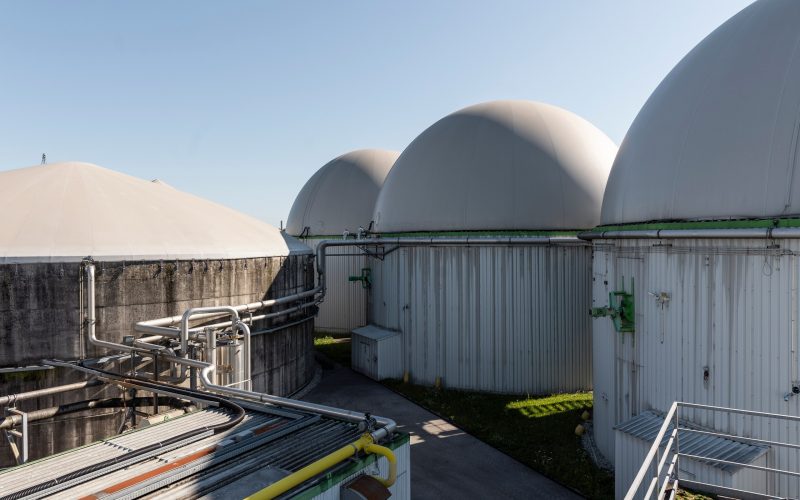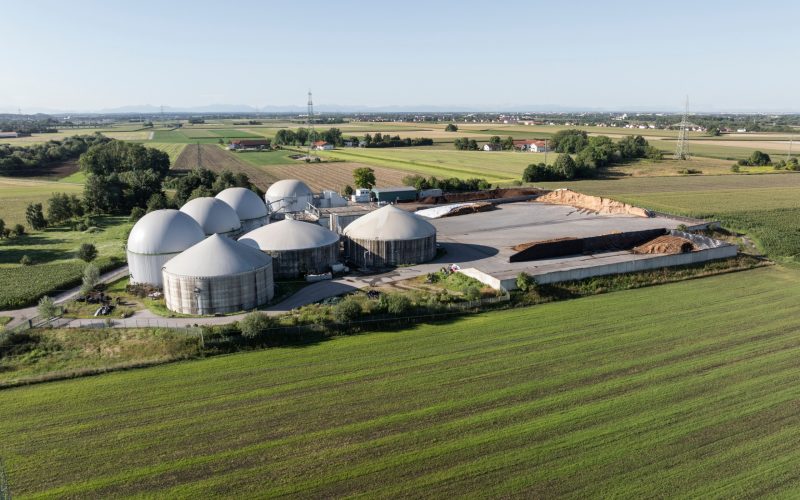Digestate: the value and the contribution to soils
For the SAF platform, our experts Petro Kucheruk and Taras Koziupa prepared an overview of digestate features, production and end use, and highlighted regulatory barriers. The article is based on the materials of the position paper Exploring digestate’s contribution to healthy soils, published by the European Biogas Association in April 2024.
Digestate, a co-product of anaerobic digestion (Figure 1), contains a portion of the organic matter (about 1/3) and mostly the entire mineral fraction from the initial feedstock. Three main forms of organic matter (OM) are presented in digestate:
- Poorly/non-degradable OM, such as lignin and cellulose.
- Living OM, composed of microorganisms.
- Biodegradable OM, composed of soluble sugars and hemicellulose.
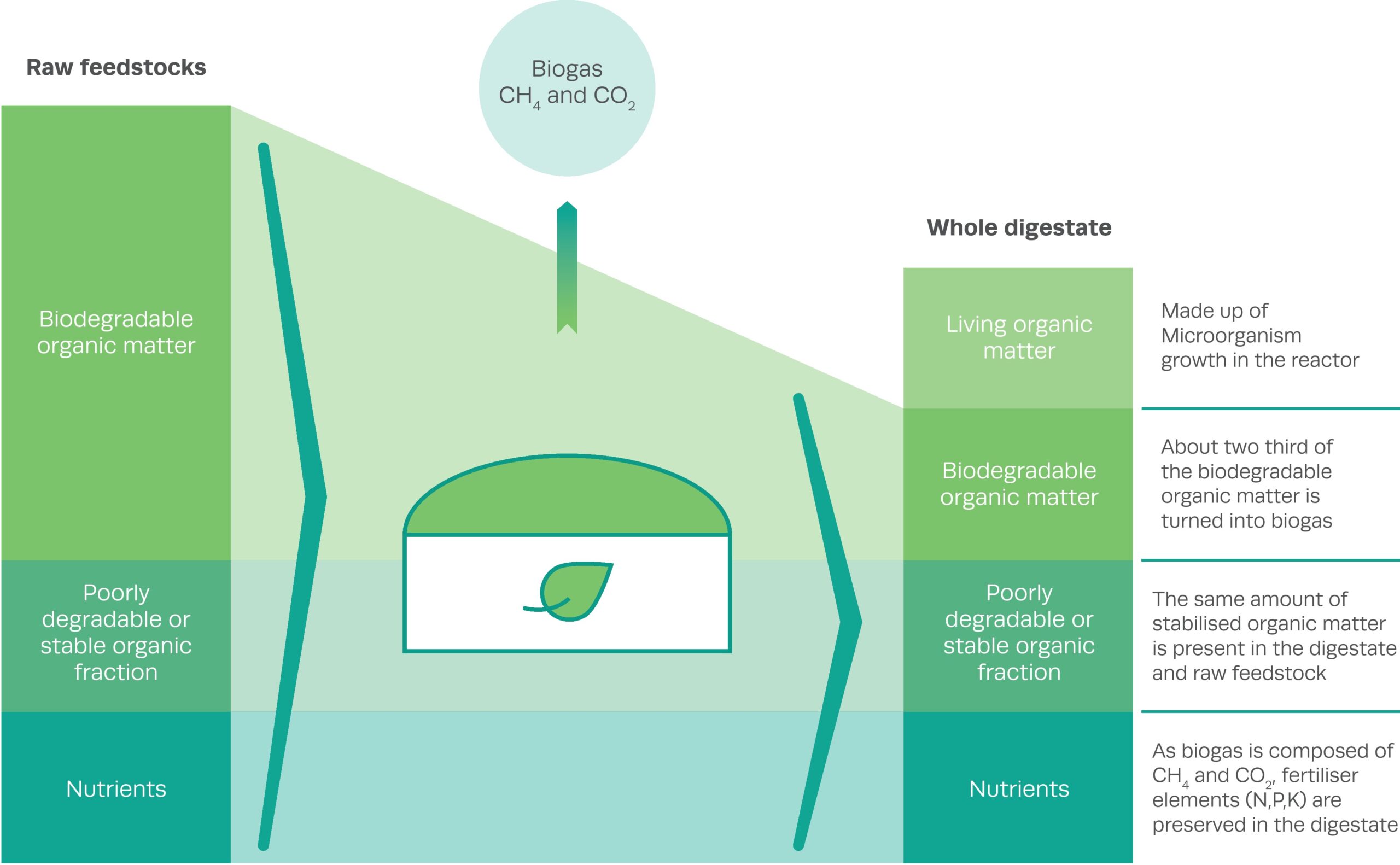
What makes digestate unique as a fertilizer?
- The ammonium/organic nitrogen ratio in digestate is higher compared to the raw feedstock, and the percentage of readily available minerals in the form of ammonium increases.
- Digestate retains its ability to form humus, which remains unchanged compared to the substrates from which it originates.
- The percentage of ammoniacal nitrogen is higher in the digestate than in the original raw material, which increases its fertilizer value.
- Its application back into soil closes nutrient cycles such as N, P, and K.
- In contrast to the exclusive use of conventional synthetic fertilizers, long-term fertilization with digestate enhances soil structure, soil aeration, and water storage capacity.
- It acts as a carbon sink thanks to its ability to store carbon in soil.
- Since digestate is a biologically stable product, this results in significantly reduced volatile organic compound emissions and odors during digestate storage and application compared to the initial feedstock as well as reduced naturally occurring CH4 and N2O emissions compared to, for example, raw manure.
- Animal and plant pathogens are either vastly diminished or wholly eradicated during anaerobic digestion leaving digestate as a sanitized product.
- Reduced greenhouse gas emissions due to: the capture of CH4 during digestion which otherwise would have been emitted during uncovered storage, reduction of synthetic fertilizers production, and soil carbon sequestration among other factors.
Digestate use and processing
Leaving a biogas reactor, digestate is present in a raw form, which is a mix of solid and liquid fractions. It can be applied straightforwardly, though many biogas operators go for mechanical separation of digestate into liquid and solid fractions for main reasons such as to reduce transport costs, to ease spreading, and to increase nutrient value (Figure 2). The main approaches for the separation include centrifuges, decanter screw presses, sieve belt presses, or drums.
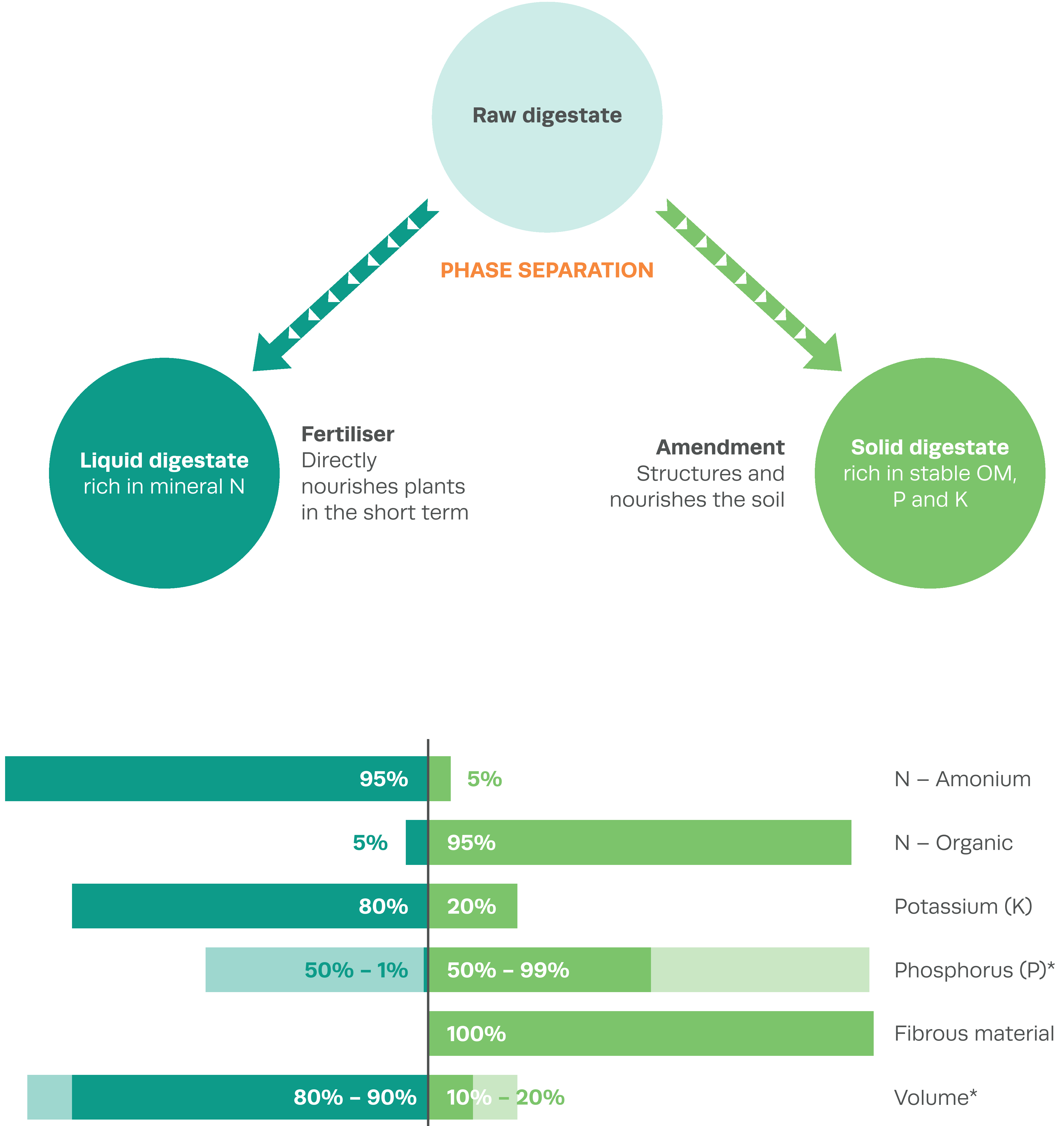
Some of the novel digestate applications include the production of carbon materials for energy storage applications, the synthesis of nanomaterials, char, and biofuels, as well as microbial products. Innovative pathways of digestate usage are:
- Digestate for the cultivation of insects (black soldier flies).
- Digestate as a pretreatment agent (for anaerobic digestion of lignocellulosic biomass).
- Digestate in electrochemical processes (Fuel/Electrolysis Cells).
- Digestate as a medium for hydroponics.
- Production of volatile fatty acids.
- Production of bio-stimulants.
- Recovery of bio-ammonia to biohydrogen.
- Use of the liquid fraction of digestate for microalgae growth.
Digestate production and end-use in Europe
Current digestate production in Europe, as of 2022, is 31 million tonnes of DM per year. While potentially, this volume could reach 75 million tonnes of DM per year by 2030 and 177 million tonnes of DM per year by 2050. The 2022 data on the European digestate production per capita of selected countries is presented in the diagram below.
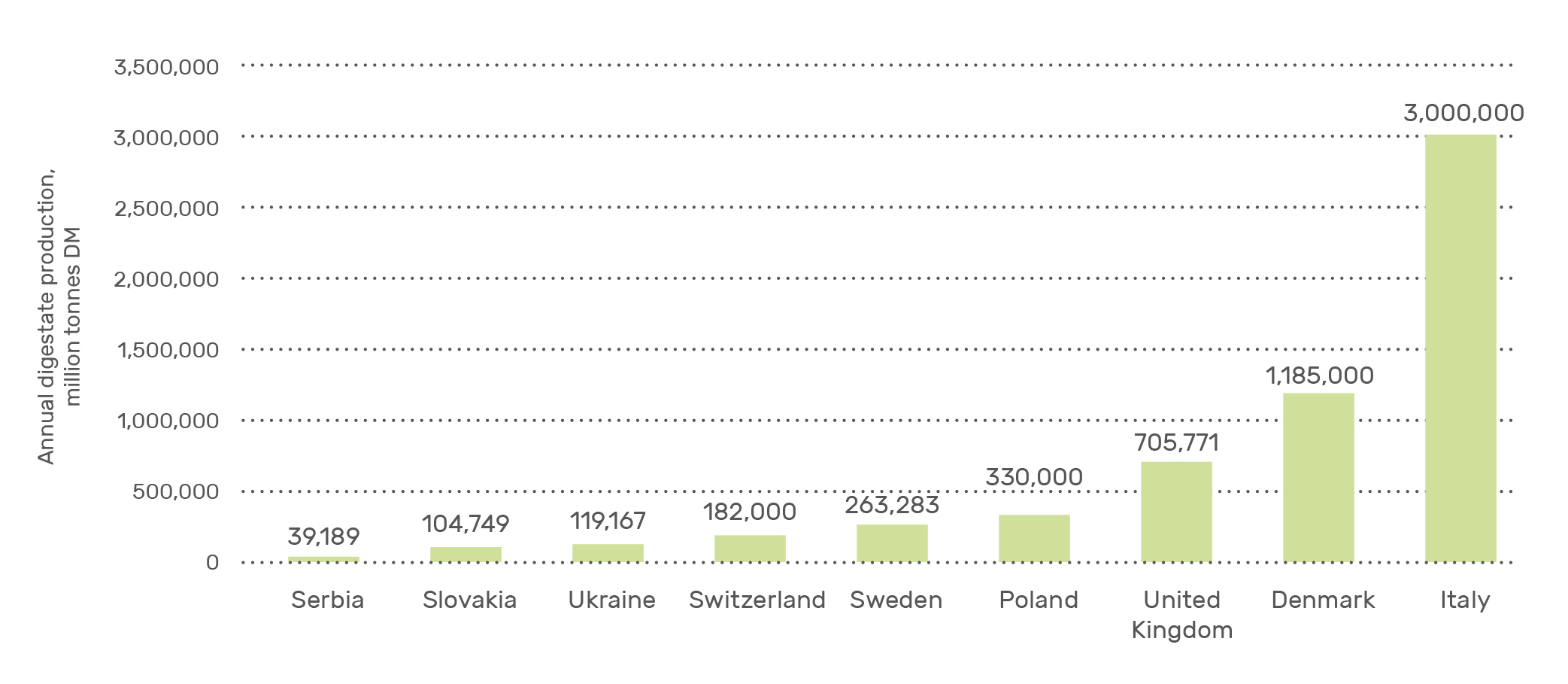
As for the end-use of digestate, it is estimated that 73% of Europe’s digestate is applied directly as a bio-fertilizer, and about 15% of the digestate produced is upgraded before being applied to agricultural fields. The remaining digestate goes to other applications such as horticulture, soil production, landfill coverage, biological processing, etc., or is exported.
Regulatory barriers to utilization and merchandizing of digestate
Despite digestate being an environmentally friendly solution for handling waste and its ability to close nutrient cycles and reduce GHG emissions, the biogas operators that produce and sell digestate are required to follow complex, heterogeneous, and strict guidelines and policies set both externally (at the EU level) and internally (at the state level).
Read the full material on the SAF platform.
We remind you that UABIO is a partner of the Sustainable agribusiness platform (SAF).
SAF is a communication platform that brings together agribusiness stakeholders and aims to establish strong links between market players and introduce sustainable approaches in agriculture. For this platform, our team prepares verified professional content on the bioenergy sector.

